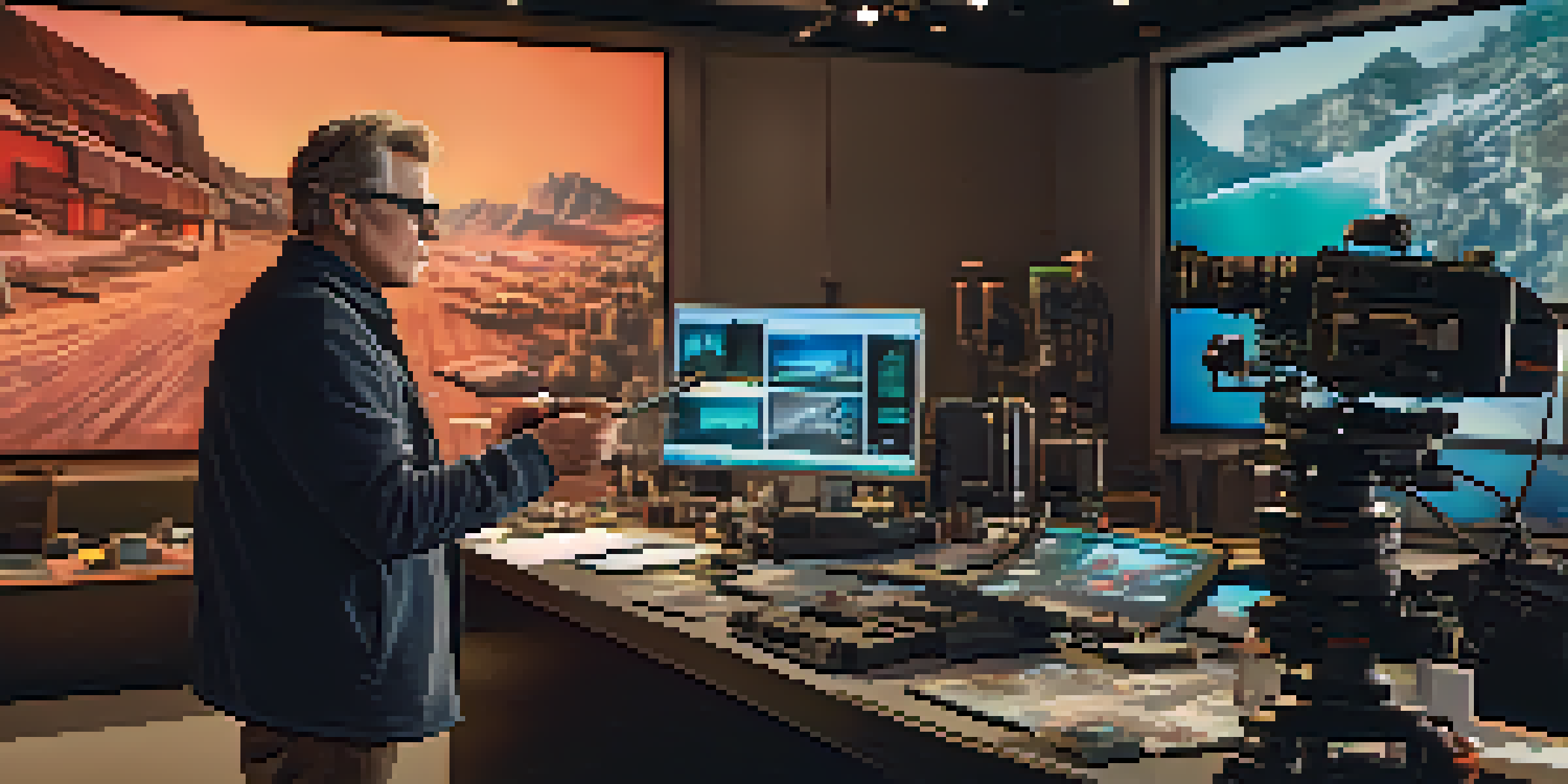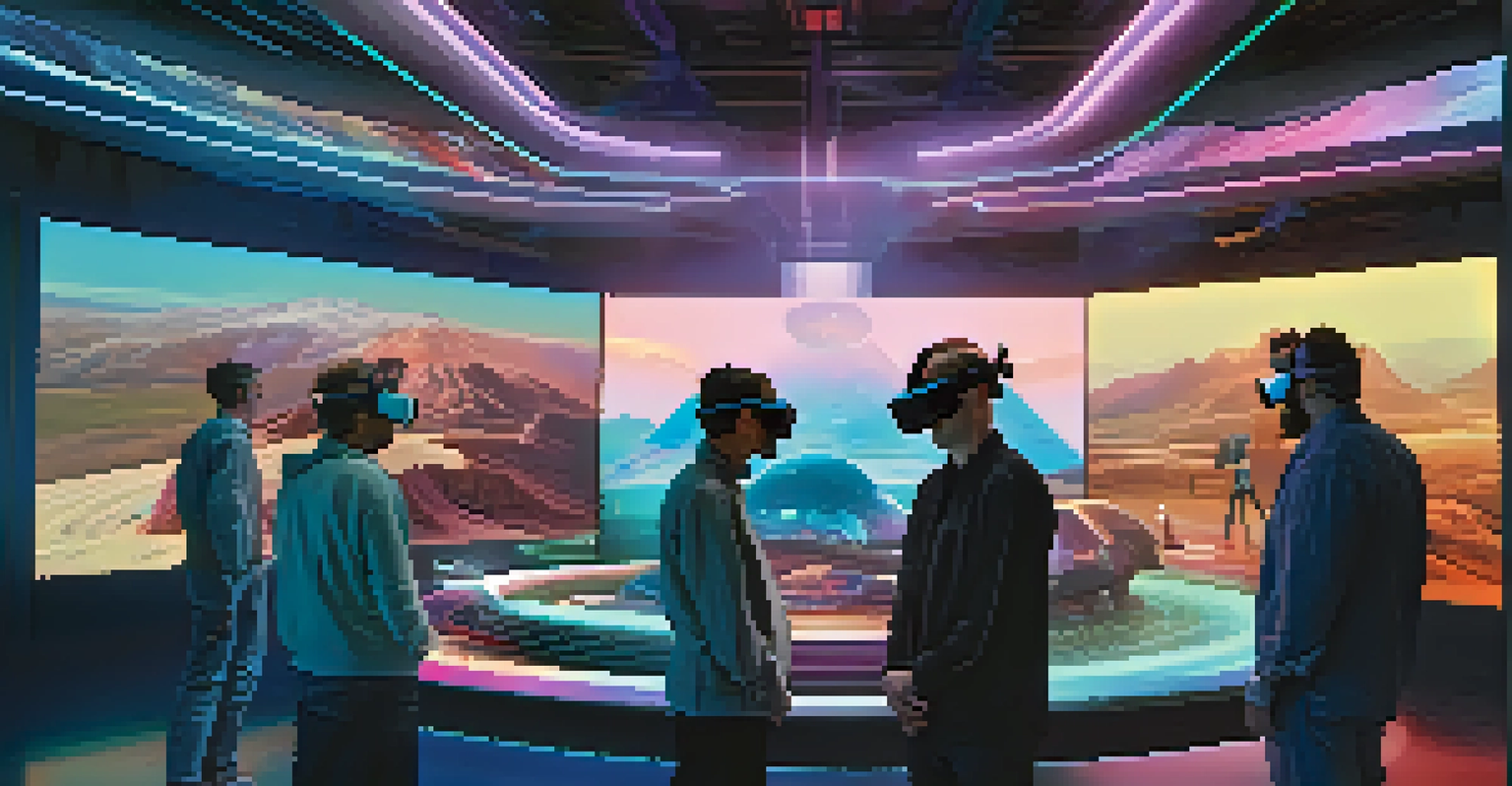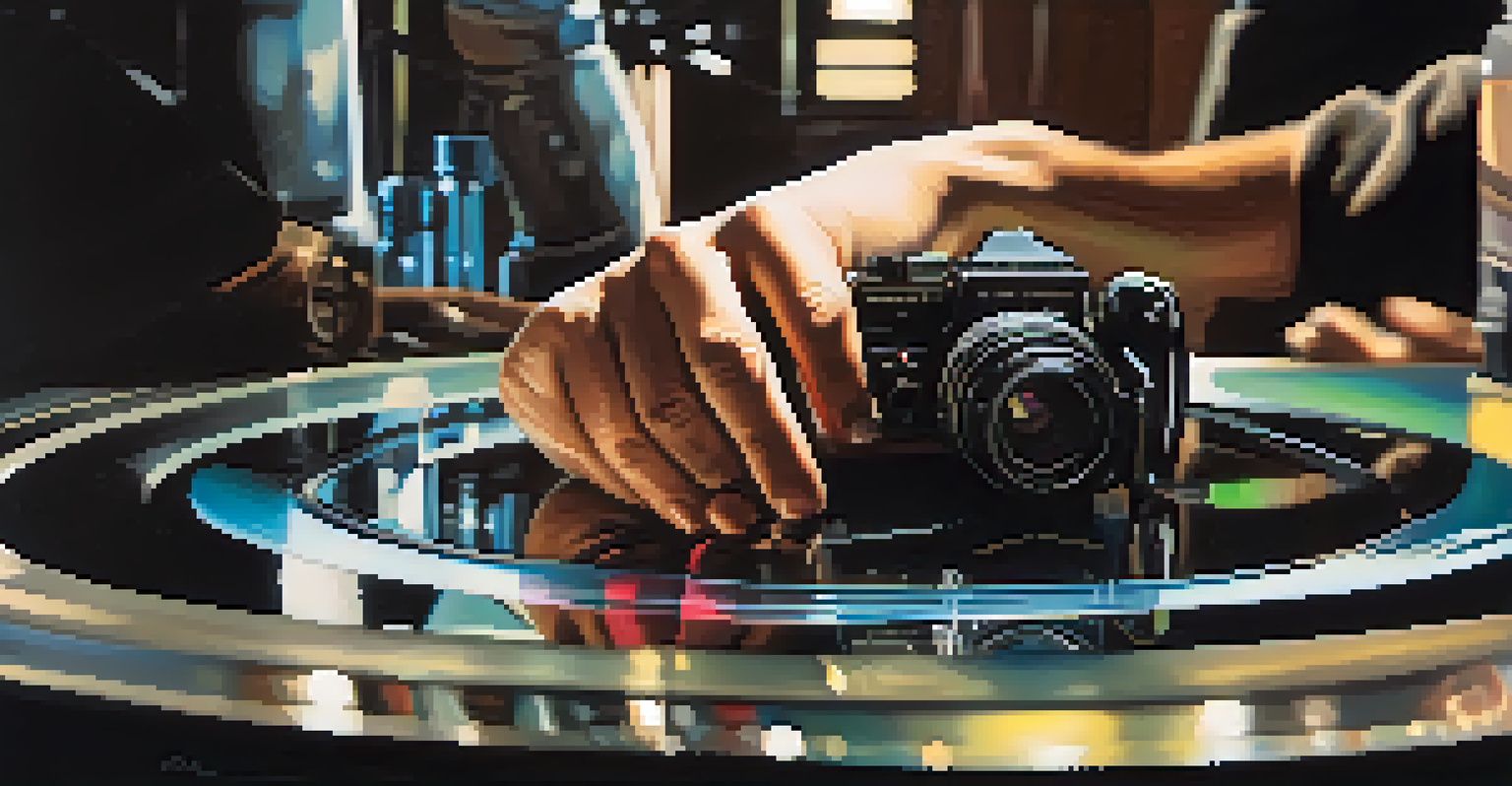Directorial Influence on Cinematic Technology and Innovation

The Role of Directors in Shaping Film Technology
Directors play a crucial role in determining the visual and technical style of a film. Their creative vision often drives the adoption of new technologies, pushing the boundaries of what is possible on screen. For instance, directors like James Cameron have pioneered advancements in CGI and 3D technology, significantly altering the cinematic landscape.
The best way to predict the future is to invent it.
When a director embraces innovative techniques, it can lead to breakthroughs that influence the entire industry. This not only enhances the storytelling experience but also inspires other filmmakers to explore and experiment. As a result, the director's influence extends far beyond their own projects, fostering a culture of creativity and innovation.
Related Resource
Moreover, directors often collaborate closely with cinematographers and special effects teams, ensuring that the technology aligns with their artistic vision. This synergy between artistry and technology creates films that are not only visually stunning but also resonate emotionally with audiences.
Case Study: James Cameron and CGI Breakthroughs
James Cameron is a prime example of a director who has significantly influenced cinematic technology. With films like 'Terminator 2: Judgment Day,' he introduced groundbreaking CGI that set new standards for visual effects. His commitment to pushing the envelope has inspired countless filmmakers to embrace digital technology.

Cameron's innovative use of motion capture in 'Avatar' revolutionized how stories could be told through animation. By blending real performances with digital enhancements, he opened up new possibilities for character creation and world-building. This has had a lasting impact on how directors approach storytelling in visually driven narratives.
Directors Drive Film Technology
Directors like James Cameron lead the charge in adopting and innovating new technologies, significantly altering the cinematic landscape.
Ultimately, Cameron's work demonstrates how a director's vision can catalyze technological advancements in film. As filmmakers continue to explore the potential of CGI and other tools, Cameron's influence remains a benchmark for creativity and innovation in cinema.
The Influence of Directors on Filmmaking Techniques
Directors not only influence technology but also the techniques used in filmmaking. Their unique styles can lead to the development of new approaches to cinematography, editing, and sound design. For example, Quentin Tarantino's distinct narrative style has inspired filmmakers to experiment with non-linear storytelling.
Film is a magical experience; it’s a conveyor of ideas and emotions.
By challenging traditional methods, directors encourage innovation within the industry. This can lead to the creation of entire sub-genres or movements. When a director takes risks, it often prompts others to think outside the box, resulting in a richer cinematic landscape.
Related Resource
As directors continue to experiment with techniques, audiences benefit from a diverse array of storytelling forms. This evolution keeps the art of filmmaking fresh and engaging, ensuring that viewers are continually captivated by new experiences.
Innovative Directors: Pioneers of New Genres
Many directors are recognized as pioneers for their contributions to new genres. For instance, the work of Christopher Nolan has redefined the superhero genre with films like 'The Dark Knight,' blending deep philosophical themes with action. His approach has set a precedent for future superhero films, encouraging deeper storytelling.
Directors like Wes Anderson have created a distinct aesthetic that defines their films, leading to a new wave of indie cinema. His symmetrical compositions and whimsical narratives have inspired a generation of filmmakers to embrace a unique visual style. This evolution showcases how directors can carve out new niches in the industry.
Collaboration Fuels Innovation
The teamwork between directors and technicians is essential for transforming creative visions into immersive cinematic experiences.
These innovative approaches not only reflect the directors' artistic sensibilities but also influence the broader cinematic landscape. As new genres emerge, audiences are treated to fresh narratives that challenge conventions and expand their viewing experiences.
Directors and the Evolution of Film Equipment
The film equipment directors choose to use can significantly impact the final product. Many directors advocate for the latest technology, whether it's cutting-edge cameras, drones for aerial shots, or advanced sound systems. This embrace of new tools allows for more creative storytelling techniques.
For example, the use of IMAX cameras by directors like Christopher Nolan not only enhances visual richness but also immerses viewers in the film. This push for better equipment has created a ripple effect, encouraging manufacturers to develop more advanced tools tailored for cinematic creativity.
Related Resource
As directors continue to experiment with and adopt new technologies, they shape the future of filmmaking. This evolution ultimately benefits the entire industry, as it leads to improved standards and innovations across the board.
The Collaboration Between Directors and Technicians
A successful film often hinges on the collaboration between directors and technicians. Directors communicate their vision to cinematographers, editors, and special effects teams, ensuring that every element aligns with their creative goals. This teamwork is essential for bringing innovative ideas to life on screen.
For example, the partnership between director Guillermo del Toro and his visual effects team has resulted in stunning, immersive worlds in films like 'Pan's Labyrinth.' Their collaboration highlights how directors can effectively leverage technology to enhance storytelling and create unforgettable cinematic experiences.
Streaming Expands Creative Freedom
The rise of streaming platforms allows directors to explore unconventional storytelling methods, leading to richer narratives and innovative content.
This collaborative spirit fosters a culture of innovation where everyone is encouraged to contribute ideas. As a result, the film industry benefits from diverse perspectives and technical advancements that elevate the quality of storytelling.
The Impact of Streaming on Directorial Innovation
The rise of streaming platforms has dramatically changed the landscape for directors. With more opportunities to create content, filmmakers can explore innovative storytelling methods that traditional studios might shy away from. This freedom allows directors to take creative risks that can lead to groundbreaking works.
For instance, directors like David Fincher have utilized streaming platforms to produce series that push narrative boundaries. The longer format allows for deeper character development and intricate storytelling, showcasing the potential of the medium.

Streaming also encourages directors to experiment with genre-blending and unconventional structures, leading to fresh and engaging content. This evolution in distribution is reshaping how directors approach their craft, ultimately benefiting viewers with a wider range of storytelling options.
The Future of Directorial Influence on Cinema
As technology continues to evolve, the influence of directors on cinematic innovation will only grow. Emerging technologies like virtual reality and artificial intelligence are opening new avenues for storytelling, and visionary directors will be at the forefront of this change. Their ability to envision and implement these technologies will shape the future of cinema.
Moreover, as global cinema continues to diversify, we can expect to see a broader range of voices influencing film technology. Directors from different cultural backgrounds will bring unique perspectives that can lead to innovative storytelling techniques and the development of new genres.
Ultimately, the future of cinema will depend on the collaborative spirit of directors, technicians, and audiences. By embracing change and innovation, filmmakers can create experiences that not only entertain but also challenge and inspire.